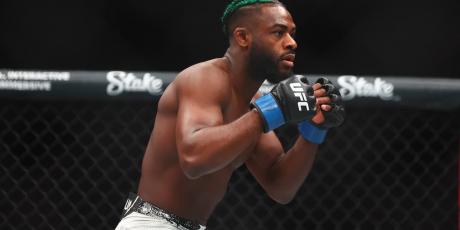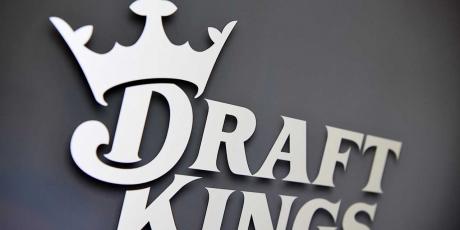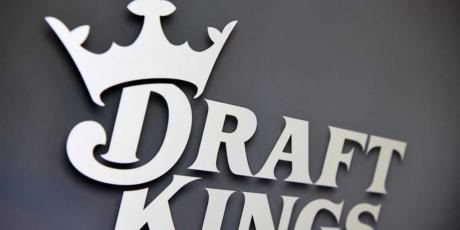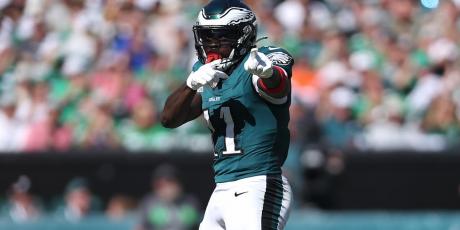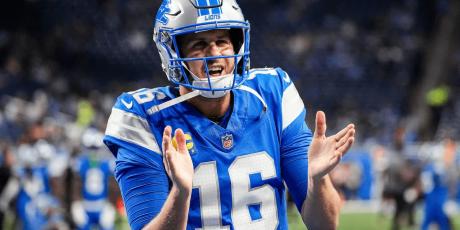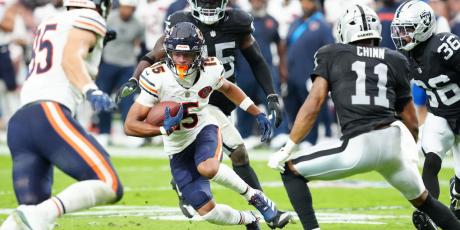2015 MFL10 Recap: Running Backs and Wide Receivers

2015 was an historically bad year for running backs, with disappointing seasons from most of the top-tier players at the position. On the other hand, most of the highly drafted wide receivers met or exceeded value. In draft-only best ball leagues like MFL10s, where there is no waiver wire or trading, the inability to secure league winners like Tim Hightower or Thomas Rawls mid-season means that missing on high draft picks is often detrimental to success.
In this 2015 RB and WR recap, we'll review some of the values that could have helped salvage your season if you missed on a top pick, save the obvious league winners such as Devonta Freeman, and discuss players that, in retrospect, should have been viewed as overvalued given their situations going into the season.
Running Back
Top tier running backs were a mess in 2015, but a look back at the position offers some lessons that can be applied to the 2016 draft season. As more offenses across the NFL have opted for a running back by committee approach, many more running backs have become viable fantasy options, especially in PPR leagues such as MFL10s. This was especially evident last season. Whether because of injury or unwarranted hype, a large majority of the top running backs vastly under-performed, making room for even more usable fantasy backs than in previous seasons.
Though 2015 was a bit of an outlier, running backs are historically the most injury prone position in fantasy, making it especially important in best ball leagues to target high upside handcuffs as well as affordable players in backfields with a likely timeshare.
The following table highlights some spots where we could have targeted such players:
| Player | Round Drafted | Position Drafted Rank | Position Finishing Rank | Difference |
|---|---|---|---|---|
| Bilal Powell | 18.25 | 98 | 30 | 68 |
| Jeremy Langford | 17.75 | 84 | 25 | 59 |
| DeAngelo Williams | 14.5 | 58 | 4 | 54 |
| Danny Woodhead | 7.75 | 41 | 3 | 38 |
| Melvin Gordon | 2.5 | 14 | 47 | -33 |
| C.J. Spiller | 3 | 16 | 58 | -42 |
| Joseph Randle | 3.5 | 20 | 65 | -45 |
| Andre Ellington | 3.5 | 18 | 66 | -48 |
Looking at some of the best values from 2015, we see a group of players that were clear handcuffs on teams that were likely to continue featuring their running back even if their top option went down. Bilal Powell was behind an often injured Chris Ivory, Jeremy Langford was backing up an aging Matt Forte, and DeAngelo Williams found himself in a potent offense behind a running back that saw as much usage as any player in 2014. Danny Woodhead had proven in the past to be a valuable PPR asset, even as a secondary option, a role he was expected to assume in 2015 with Melvin Gordon slotted in as the starter. What we should learn is to not get caught up in hype on unproven players who are being drafted at their ceiling. Backs in situations with clear paths to playing time are what you are looking for when targeting late round RBs.
In terms of back that proved to be over-valued, there were following situations:
- Melvin Gordon – Rookie RB on a team with a weak O-Line, sharing a backfield with PPR monster, Danny Woodhead.
- C.J. Spiller – Went to a new system on a Saints team with multiple backs sharing time, in hopes of a vintage Sproles type season. His price combined with a murky situation proved extremely risky in the third round.
- Andre Ellington – Finished as the RB18 in 2014 and drafted as RB18 in 2015. Injury concerns over his career combined with the fact that he would likely be in a pass heavy offense with a healthy Carson Palmer and an uncertain backfield role, meant that Ellington as the RB18 may have been a fair estimation but not at a third round price.
- Joseph Randle – The poster child for hype in 2015. Everyone looked at the Dallas O-Line and ignored the lack of Randle’s history. This was a dice roll in the third round.
Running back has been one of the most volatile positions in fantasy. Paying for hype and uncertainty is almost always a losing proposition. Even in the best case scenario, drafting players at their ceiling will result in you hitting, but rarely exceeding, value.
Wide Receiver
Except for a few injuries, most of the wide receivers drafted in the top 20 at their position hit or exceeded value. Even early round disappointments like Randall Cobb and Mike Evans finished as top 25 wide outs.. Mid to late round wide receivers are generally more boom or bust than most other positions , except maybe tight end, which is great in a best ball league since you don’t have to guess which weeks those receivers will producer starter-caliber fantasy points.
As with any position, we need to be careful with players changing teams because of the uncertainty of their roles. The following table illustrates that point.
| Player | Round Drafted | Position Drafted Rank | Position Finishing Rank | Difference |
|---|---|---|---|---|
| Allen Hurns | 16 | 71 | 16 | 55 |
| Michael Crabtree | 12 | 58 | 17 | 41 |
| Danny Amendola | 17.75 | 85 | 45 | 40 |
| Donte Moncrief | 13 | 63 | 34 | 29 |
| Larry Fitzgerald | 7 | 35 | 7 | 28 |
| Eric Decker | 7.5 | 37 | 13 | 24 |
| Kenny Stills | 11 | 54 | 79 | -25 |
| Mike Wallace | 6.5 | 32 | 71 | -39 |
| Andre Johnson | 4 | 21 | 67 | -67 |
Two prime examples of wide receivers that busted after changing teams in 2015 were Kenny Stills and Andre Johnson. As their ADP shows, they were being drafted with high expectations, but both had undefined roles in new offenses. The Colts had numerous weapons and with so much competition for targets, it was highly unlikely for Andre Johnson to hit his fourth round ADP value. The same can be said for Kenny Stills (although he was much more affordable than Johnson). Stills was going from catching balls from Drew Brees, primarily in a dome, to a crowded Dolphins pass-catching corps with a less efficient quarterback in Ryan Tannehill.
In terms of receivers that returned significant value in 2015, a look back suggests that drafters maybe should have been more bullish on the following players given their situations:
- Allen Hurns – In his rookie year, playing with rookie QB Blake Bortles, Hurns was able to put up decent numbers with some big games (exactly what you want in a best ball league). Hurns built a rapport with Bortles as the 2014 season progressed. Being drafted as the 71st WR in the 16th round, the risk was minimal and even if Hurns only had a few big games, he was worth the risk. Deep threats who can score from anywhere on the field are great MFL10 assets.
- Michael Crabtree – Unlike Hurns, who was building chemistry with his QB, Crabtree was moving to greener pastures and getting away from the run-heavy 49ers offense. Being paired with Derek Carr, who flashed promise in his rookie season, and top rookie WR Amari Cooper, Crabtree had all the makings of a bounce back season. While more costly than Hurns, he proved to have a much safer floor, which was demonstrated with 11 weeks of at least 10 PPR points. Crabtree turning in the second best statistical season of his career wasn’t assumed going into last season, but it shouldn't have been much of a surprise either.
- Danny Amendola – Considering Amendola’s past production when healthy, he was a semi-safe WR with some upside as a late pick on a high powered offense. Because he was so affordable, the threat of a few down weeks or concerns over his injury history weren't overwhelming considerations; the risk was already baked into his price. With three weeks over 20 PPR points and two more over 17 points, Amendola proved worthy of the relatively cheap investment. Though he wasn't necessarily a league winner, Amendola is the type of late round target that can keep you right in the mix.
- Donte Moncrief – Moncrief was a calculated risk that returned great value, even without things breaking perfectly in the Colts offense. The major positive for Moncrief going into drafts was that he would be catching balls from Andrew Luck, who was expected to lead one of the top fantasy offenses in football. His price became depressed, though, after it looked like he would be the third target, at best, behind TY Hilton and Andre Johnson. Once it was apparent that Johnson wouldn't be a major part of the Indianapolis passing attack, Moncrief stepped up big in his sophomore campaign. Even without Luck under center for most of the season, Moncrief finished as the WR34 after being drafted 63rd at his position.
Like running backs, it's important to be able to define a role for wide receivers going into the season. Even if a wide receiver isn't atop his team's depth chart, playing in a pass-heavy, efficient offense is often going to lead to multiple weeks with usable fantasy production. This is especially valuable in a best ball format, where owners don't have to pinpoint those weeks ahead of time. Ignoring age concerns or drafting receivers where there isn't a clear path to production can ultimately lead to wasted picks.
The Bottom Line
Running backs and wide receivers are the lifeblood of any league and this held true for 2015 MFL10s. The winning MFL10 teams found great value at these positions in later rounds, keeping them in the hunt even if they whiffed on an early round RB. Hitting on players like Devonta Freeman or David Johnson can be a huge boost to your team, but they won’t win a league if there is no depth elsewhere.
Reaching for players already being drafted at their ceiling is going to be a losing draft strategy over the long run. When searching for value at RB or WR, it's important to at least be able to see a realistic scenario where a player can find themselves in a situation with increased playing time or scoring opportunity. Targeting players in efficient offenses or coming off of promising years early in their careers can result in some of the best values of the season. Ignoring age or injury concerns, or murky playing situations for expensive draft picks can prove to be the downfall of a fantasy team, especially if there is no chance to make up for the mistake with in-season management.

